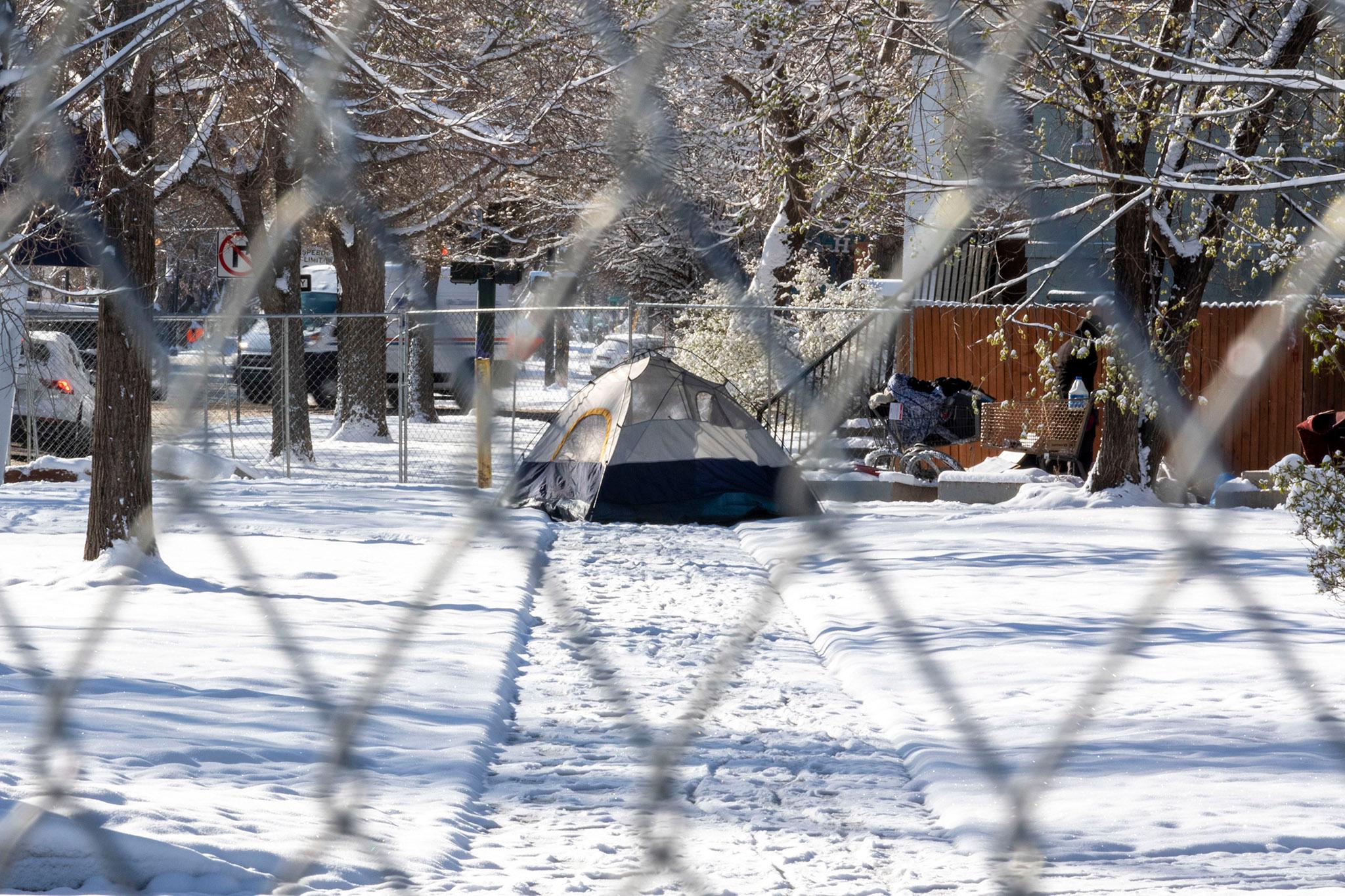The National Weather Service predicts snow and sub-zero temperatures Monday night, as Denver outreach workers brace for a 4 a.m. Tuesday start to the annual Point in Time Count -- the U.S. Department of Housing and Urban Development's nationwide attempt to understand how many individuals are experiencing homelessness on any given night.
The data, which helps HUD make regional funding decisions, will no doubt be shaped by the weather.
"There's things beyond our control that can affect the outcome of a count," said Chris Conner, the director of Homeless Systems Strategies for Denver's Department of Housing Stability or HOST, on Monday afternoon. "Weather certainly is one of those factors. Last year we did it in a snowstorm, as well, but not necessarily the deep freeze that we're anticipating tonight."
The weather's going to be downright brutal.
"Weather does have an impact on the count," wrote Jamie Rife, the executive director of the Metro Denver Homeless Initiative, which runs the regional Point in Time Count. "Generally, in warmer years, we will see more people staying outdoors or in vehicles (unsheltered) and lower sheltered numbers. On cold years, like tonight, people tend to stay indoors in shelters or the region's ad hoc Cold Weather Shelters. This generally results in lower unsheltered numbers."
Why start so early in the morning?
"We don't want folks exiting shelter who are then mistaken for people who are unsheltered homeless," said Conner. "I think it's valuable to see what's otherwise maybe not going to be seen. Part of that is being out there when we're not expected to be out there."
So what will they be looking at?
Denver's Point in Time count examines how many people are staying in shelters and on the streets.
The numbers in shelters are tracked by staff where they have the capacity to do so. In more temporary spaces -- and there are several open right now -- HOST sends outreach workers to do the count.
Counting the number of people experiencing homelessness is an ambitious and impossible task.
On Tuesday morning, around 40 people will be divided into pairs and sent out to do the count in 20 areas of the city. The only place that will not be counted is the Denver International Airport, where staff is not permitted to drive around. Park rangers will be tallying up people living in parks, and the city's Street Enforcement Team will focus on identifying unhoused people living in vehicles.
During the early morning count "there's no interaction with the folks that we're trying to establish information for," Conner said. "We count three different things. We count individuals that we observed in homelessness that are outside. We count tent structures or structures that are created that people are enduring homelessness in. And we do that vehicle count through the SET team."
After the initial count is finished, HOST enters a second phase where the Denver Street Outreach Collaborative -- the St. Francis Center, the Colorado Coalition for the Homeless and Urban Peak -- surveys people about various issues they face and how they live. The number of people the collaborative surveys is based on a statistically meaningful slice of the total of people that were counted on Tuesday morning. Those questions give more insights to policymakers about the issues Denver's unhoused population is facing.
Here's how Conner explains the effect of the weather on the count.
"If it were one of those winter 40-degree days that Denver experiences, our unsheltered count would be higher than what I anticipated might be revealed tomorrow morning," he said.
While unsheltered homelessness might be harder to track with encampments hidden under snow, the number of people accessing services will likely be greater than normal.
But some people who would normally be outside will be neither in formal shelters nor encampments.
"Folks may be taking shelter indoors with friends, or they may be pooling together to get motels," Conner said. "Those would not clearly be captured in accounts of people who are experiencing unsheltered homelessness on that specific night."
Conner cautions the public not to think that the number counted during the Point in Time survey reflects the full number of unhoused people in Denver.
"There's always going to be someone that we miss," Conner said. "It's nothing that we can certainly perfect. So we all, around the table, understand that it's an underestimate of the number of people who are homeless. It's not an actual."
Still, the Point in Time Count is useful as the city weighs how to shelter people.
"You recognize its limitations," said Conner, "and you find its value at the same time."













